Take a look at our pick of the 10 most fascinating and historical churches in the globe.
1. The Cathedral of Christ the Light in Oakland, California
The first cathedral to be built and opened this century, the Cathedral of Christ the Light in Oakland in California, is nothing short of a masterpiece.
The Cathedral is the seat of the Bishop of Oakland and replaces the Cathedral of Saint Francis de Sales which was irreparably damaged in a 1989 earthquake.
The Cathedral of Christ the Light complex is composed of the Cathedral church, the chancery office of the bishop’s curia, a conference centre, rectory, a mausoleum and the Order of Malta Northern California health clinic – which provides free diagnostic services to people without health insurance.
There is also a small garden on the grounds intended to serve as a place of healing for survivors of clergy abuse.
The mausoleum features 12 crypts reserved for the bishops of Oakland and burial sites available to the members of the diocese for a comparable price to the other Catholic cemeteries in the Diocese.
The Cathedral cost $175 million to build and features protective measures against earthquake damage. It serves as the mother church of approximately 530,000 Catholics. 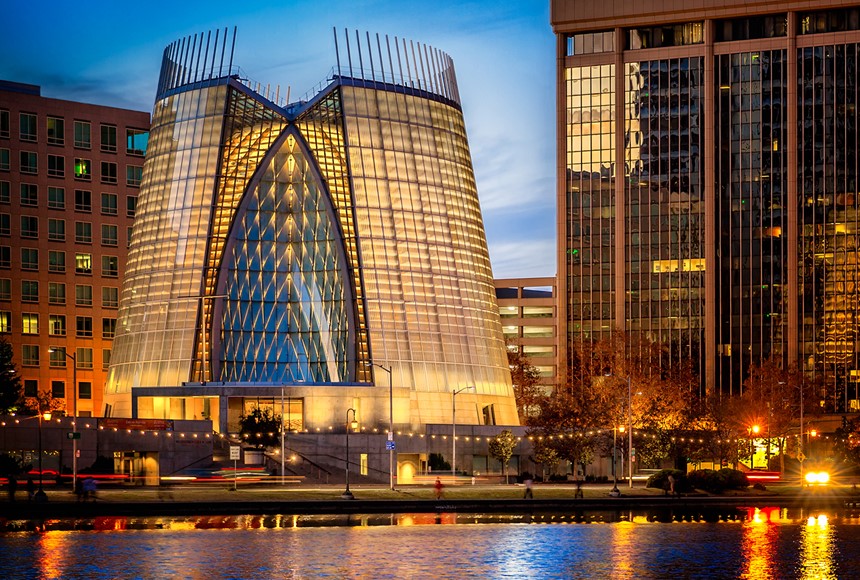
2. St John the Evangelist in Richmond, Tasmania
Nestled next to Australia’s oldest bridge, St John’s Catholic Church - which was built in 1836 - is considered the oldest Roman Catholic church in Australia.
The roots of St John’s Church can be traced back to Australia’s first Catholic Bishop, John Bede Polding OSB. He visited Van Diemen’s Land in 1835 while en route to taking up his new posting in Sydney. Bishop Polding blessed the foundation stone for the new church, making the event the first formal act of an Australian Catholic bishop.
He left Hobart Town for Sydney in September 1835. St John’s the Evangelist’s Church was officially opened on 31 December 1837. The first pastor, Fr James Ambrose Cotham OSB, who had accompanied Polding out from England in 1835, preached at the Mass.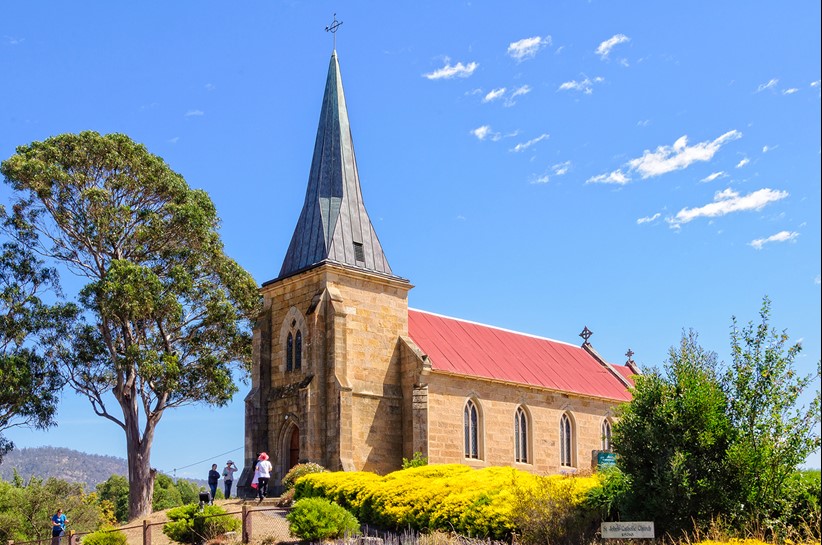
3. The Chapel of the Holy Cross in Sedona, Arizona
Welcome to Red Rock Country!
The mesmerising rocks encompass the landscape and changes colour from a cool terracotta to a deep, burning red – depending on the time of the day.
Sedona in Arizona is known for its beautiful scenery and its spiritual renewal. One of Sedona’s earliest landmarks is also one of its most endearing. The Chapel of the Holy Cross was built in 1956 and commissioned by Marguerite Brunswig Staude. A sculptress, philanthropist and devout Catholic, Staude considered the Chapel of the Holy Cross to be her greatest artistic achievement and the fulfilment of her life’s mission.
While it is a Catholic Church, denominations from around the world visit it to offer their prayers. Many believe they can feel the spiritual energy as it sits right in the centre of Sedona's so-called vortexes.
Even after 60 years, the Chapel has a contemporary almost futuristic look, a sculptural feel and a surreal effect as it projects out of two red mounds on a spur of rock that is 60 metres above the ground.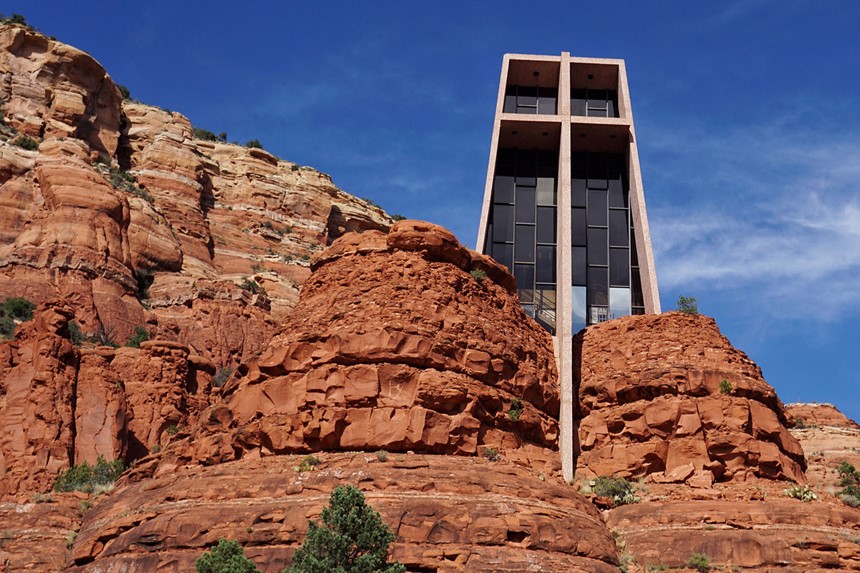
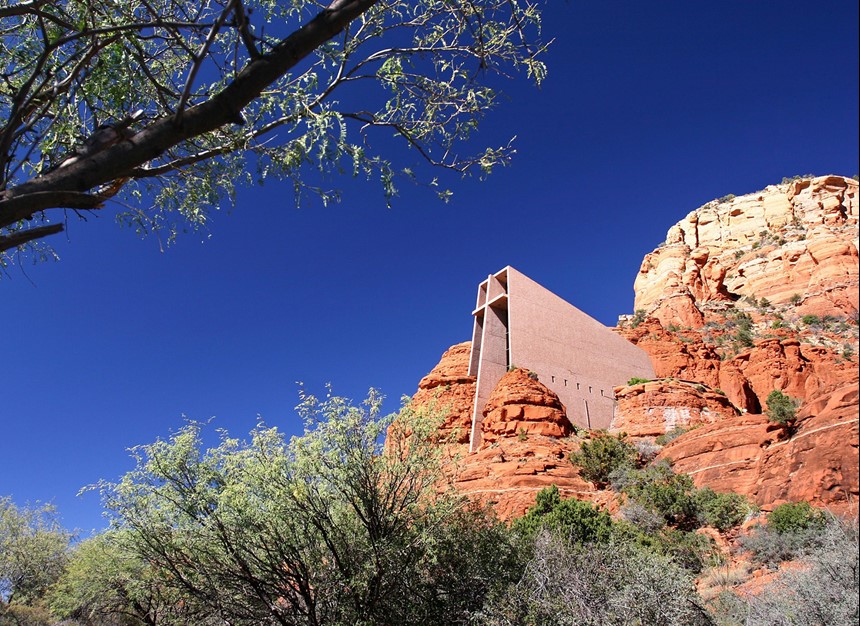 \
\
4. The Church of the Good Shepard in Tekapo, New Zealand
The Church of the Good Shepherd is situated in on the shores of Lake Tekapo in the Mackenzie Country, home to the least light-polluted skies - meaning it is ideal for watching stars at night - in the southern hemisphere. The church was built in 1935 and was designed by Christchurch architect R.S.D. Harman, based on sketches by a local artist.
The church is fully operational and is the only church in Tekapo. The parish Vicar Andrew McDonald serves one of the largest parishes in New Zealand covering the greater Mackenzie Country.
A Catholic Mass is held on the last Sunday of the month at 6pm and a weekly Sunday Eucharist is held at 4pm.
The Church has an estimated 100,000 visitors per year making it one of the most popular icons of its kind in New Zealand.
A decision in 2015 to ban selfies inside the Church was partially due to the large crowds. “Some visitors just wanted to sit quietly and reflect or pray which was at odds with people busy using electronic devices,” said Vicar Mr McDonald.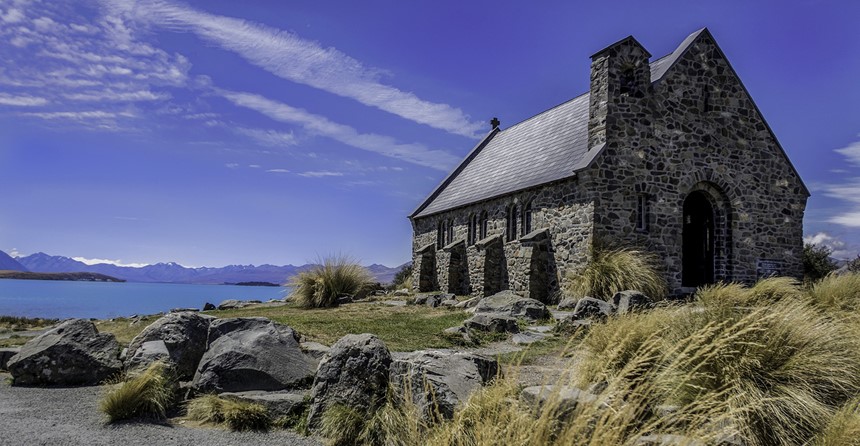
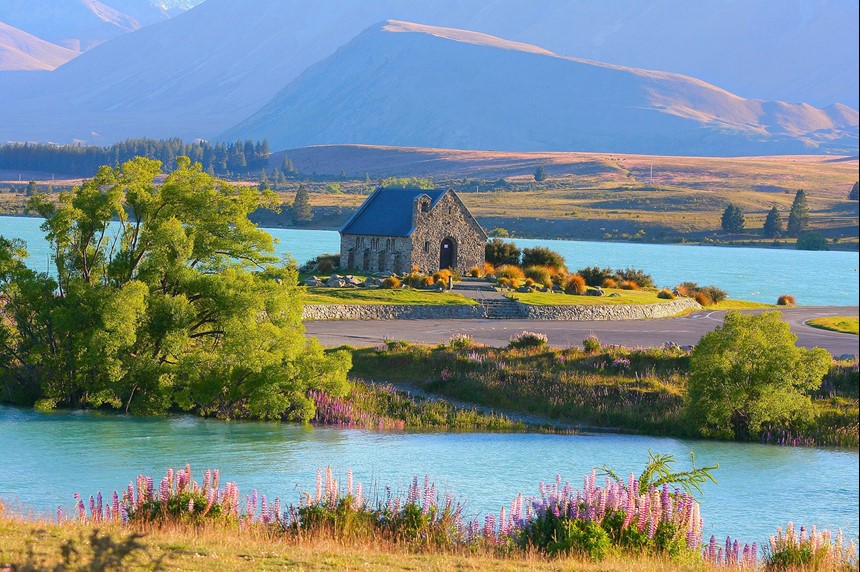
5. St Patrick’s Cathedral in New York City, United States
The Cathedral of St Patrick is a decorated Neo-Gothic-style Roman Catholic church and one of the major icons of New York City.
Created to affirm the ascendance of religious freedom and tolerance, St. Patrick’s Cathedral was built thanks to the contributions of not only thousands of poor immigrants but also by the largesse of 103 prominent citizens who pledged $1,000 each.
The cornerstone of St Patrick’s Cathedral was laid in 1858 and her doors swept open in 1879.
It was over 150 years ago when Archbishop John Hughes announced his inspired ambition to build the “new” St Patrick’s Cathedral.
In 2015, Pope Francis' first stop in New York was at St. Patrick's Cathedral in Manhattan where, at an evening prayer, he touched on the spirit of gratitude and hard work.
The Cathedral and associated buildings were declared a National Historic Landmark in the US in 1976.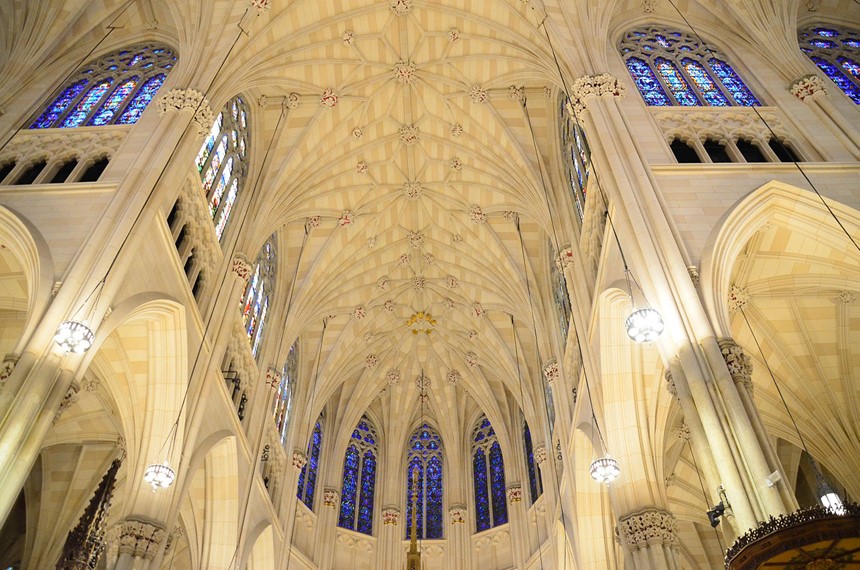
6. Palma Cathedral in Majorca, Spain
Referred to locally as ‘Le Seu’, the majestic and iconic structure began construction in the 13th century.
It is a Levantine Gothic-style cathedral and it has one of the largest rose windows in the world, known as ‘the Gothic eye’. Its nave is also one of the highest in any European Gothic cathedral.
The Cathedral’s history is closely linked to the island’s monarchy.
After the conquest of Madina Mayurqa in 1229, James I, King of Aragon and Count of Barcelona, ordered the old main mosque to be consecrated to the Virgin Mary as a place for Christian worship. He also ordered the construction of a new building, in line with the style of that period.
At the start of the 20th century, renowned Catalan designer Antoni Gaudí adapted the cathedral to meet new liturgical and pastoral requirements. His work, requested by Bishop Pere Joan Campins, continued from 1904 to 1914.
The changes involved moving the choir that had, until then, been located between the second and third sections of the nave, removing the Gothic main altarpiece, making the baldachin for the main altar, incorporating the bishop’s seat in the sanctuary, lighting the space with glazed windows and artificial light, installing a candelabra and making liturgical furnishings.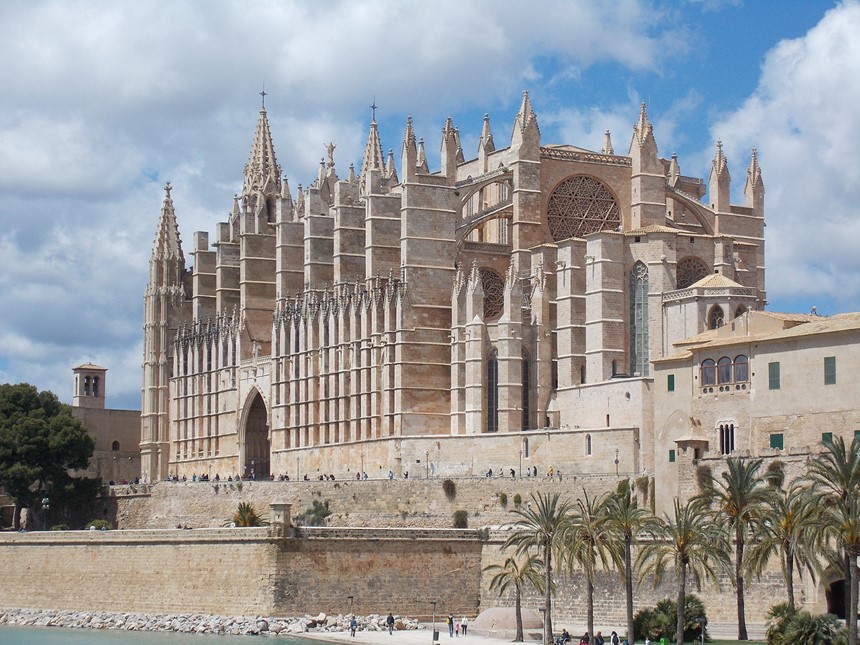
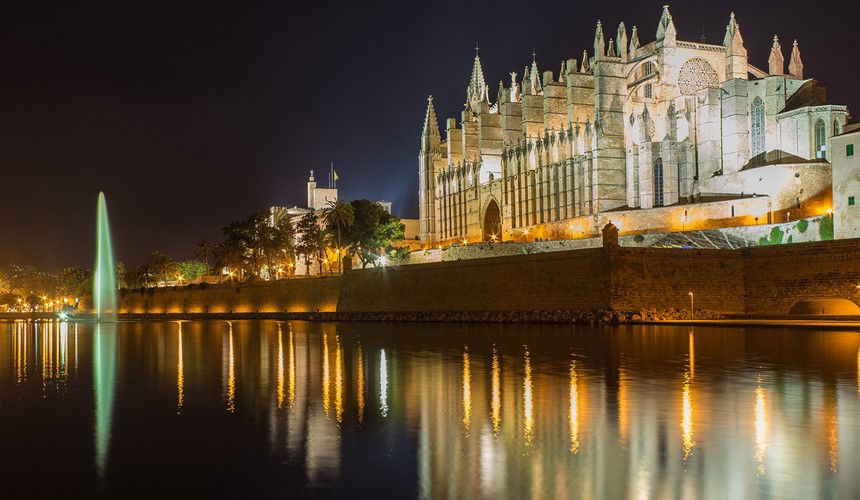
7. Salt Cathedral of Zipaquira in Cundinamarca, Colombia
The Salt Cathedral of Zipaquira is an underground Roman Catholic church built within the tunnels of a salt mine 200 metres underground in a halite mountain.
Salt deposits in Zipaquira were formed around 250 million years ago, and were raised above sea level during the late Tertiary period, when the Andes Mountain Range was formed. The town of Zipaquira is recognised, not only for the cathedral, but for being near one of the old human settlements in the Americans, the El Arba archaeological site.
Years before the underground church was built, miners had craved a sanctuary as a place for their daily prayers where they could ask for protection to the saints before starting their often dangerous work.
In 1950, the construction of a bigger project had begun and the Salt Cathedral was inaugurated on August 15, 1954 and dedicated to Our Lady of Rosary, Patron saint of miners.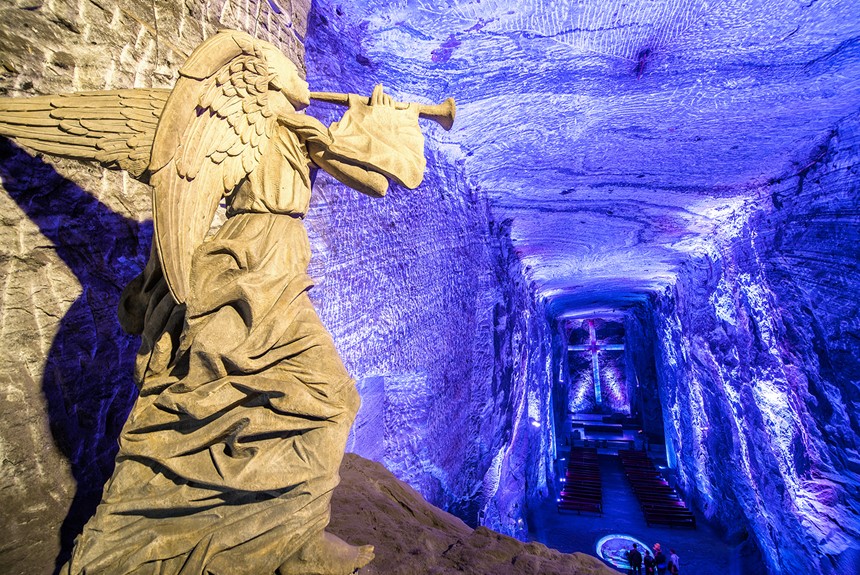
8. The Church of the Nativity of Jesus Christ in Bethlehem
This church was originally commissioned in 327, by Constantine the Great and his mother, on the site that has traditionally been considered to be located over the cave marking the place where Jesus Christ was born.
That Church of the Nativity, the original basilica, was completed in 339 but it was destroyed by fire during the Samaritan Revolts of the 6th century. A new basilica was built in 565 by Justinian, the Byzantine Emperor, restoring the architectural tone of the original.
Due to its cultural and geographical history, the site holds a prominent religious significance to those of the Christian faith.
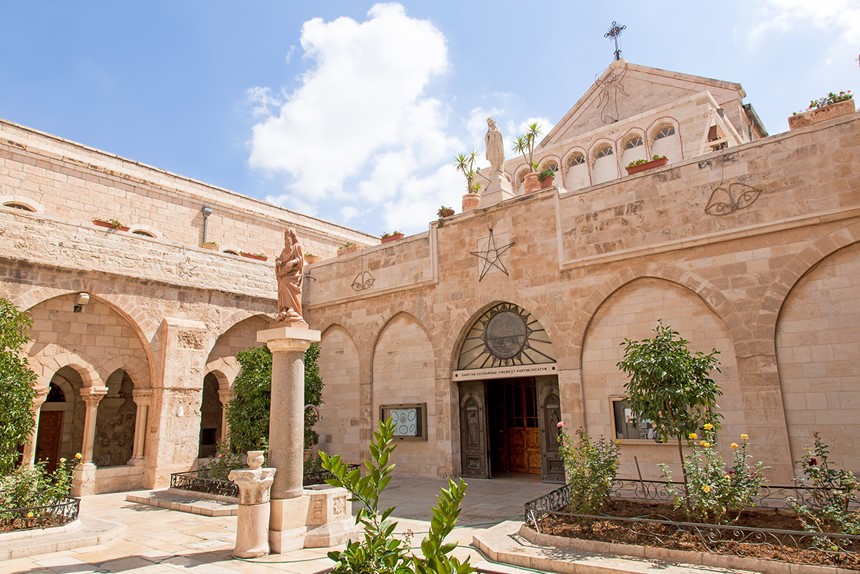
9. The Cathedral of St Stephen in Brisbane, Australia
The Cathedral of St Stephen is the heritage-listed cathedral church of the Roman Catholic Archdiocese of Brisbane and seat of its archbishop.
Work began on this little stone chapel in 1848, using a design of Gothic revival architect, AWN Pugin. Fr James Hanly celebrated the first Mass in the church on 12 May 1850 when there were just sixty Catholic families in town.
In June 1859 it became the seat for the first Bishop of Brisbane and it is the oldest Catholic church in Queensland. The current-day Cathedral was built between 1864 and 1922, with further extensions made in 1989.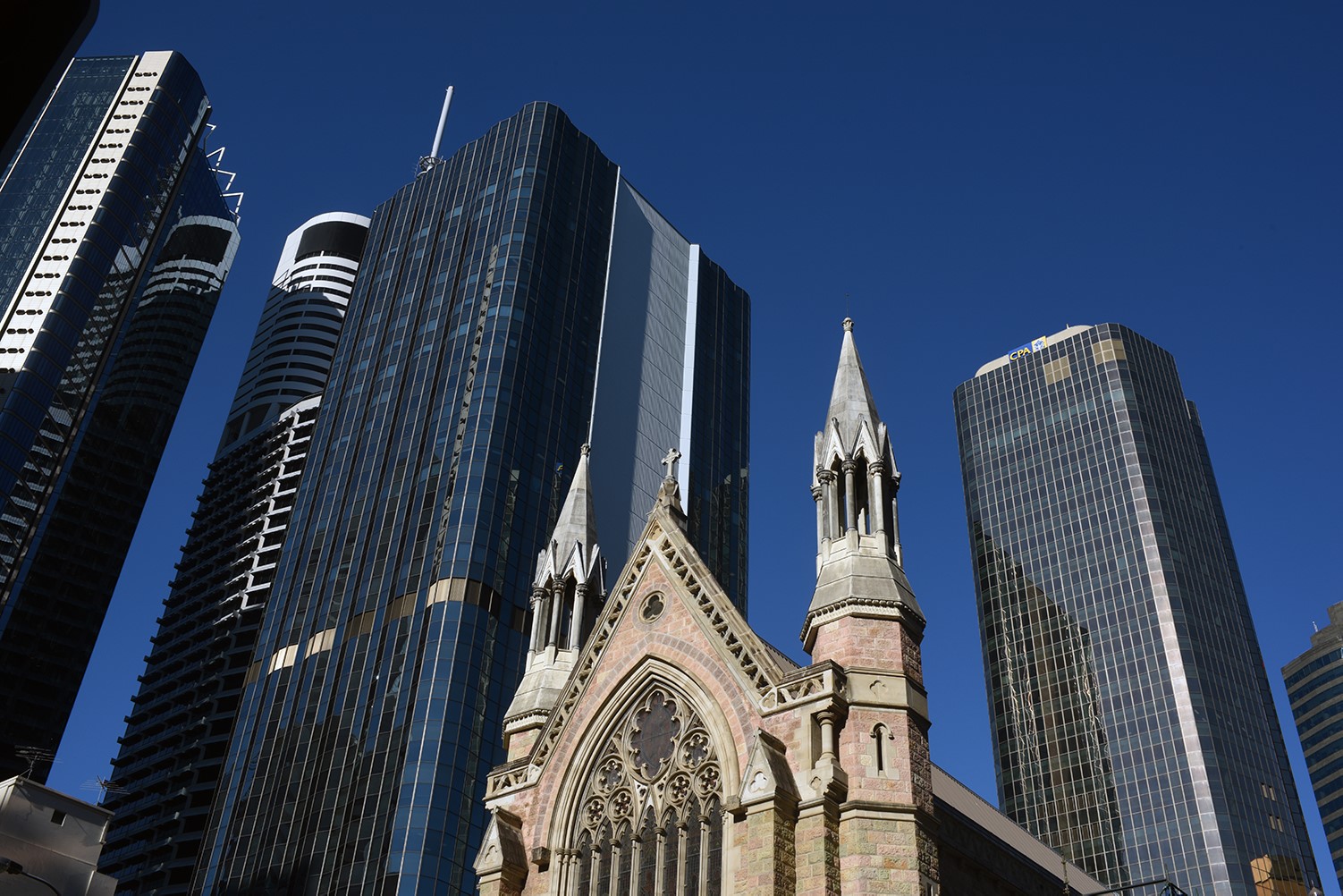
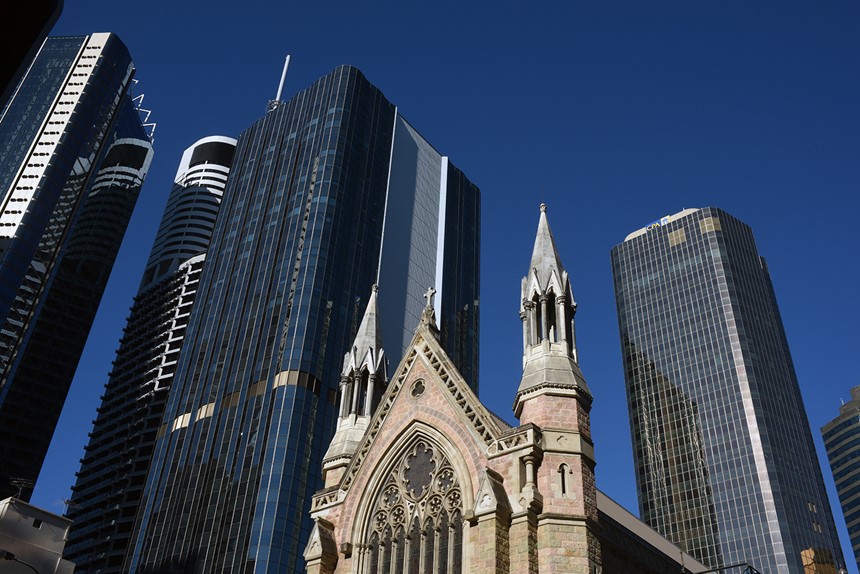
10. United States Air Force Academy Cadet Chapel in Colorado Springs, United States
The United States Air Force Academy Cadet Chapel, completed in 1962, is the distinguishing feature of the Cadet Area at the United States Air Force Academy base in Colorado Springs.
Originally controversial in its design, the Cadet Chapel has become a classic and highly-regarded example of modernist architecture. The Cadet Chapel was awarded the American Institute of Architects' National Twenty-five Year Award in 1996 and, as part of the Cadet Area, was named a US National Historic Landmark in 2004.
The Cadet Chapel serves as an all-faith centre of worship for cadets and includes Protestant, Catholic, Jewish and Buddhist chapels as well as an All-Faiths Room and a Falcon Circle, each with its own entrance. The Cadet Chapel is capable of holding services in all rooms at one time.
The Catholic Chapel seats approximately 500 people. The nave is 17 metres wide, 34 metres long and 6 metres high. The focal point of the Catholic Chapel is the reredos, an abstract glass mosaic mural designed by Lumen Martin Winter and composed of varying shades of blue, turquoise, rose and grey tessera to form a portrayal of the firmament.
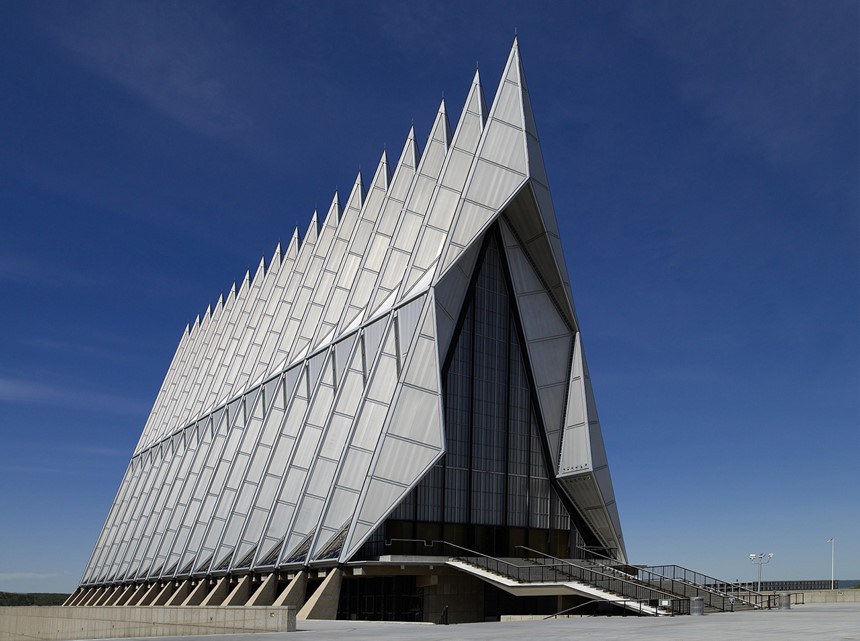
Take a look at some more beautiful and remarkable churches around the world.
